Teeth Whitening Procedures - Description and Types

People are increasingly concerned with dental aesthetics and everybody wants to have a whiter prettier smile. So, because of this, people are requesting more teeth whitening procedures to lighten their enamel color about two or four shades.
There are different whitening techniques on the market and they all have various advantages and disadvantages. The techniques used today evolved over the years (the concentration of the product, the pH, the application technique, etc).
The passage of time, poor hygiene, tobacco, consumption of food with dyes as well as some medications and drinks (such as coffee or red wine) darken the enamel of the teeth. Not only that but they also stain them. However, the main concern of most patients is sensitivity and dental demineralization.
Teeth whitening procedures
What exactly is it?
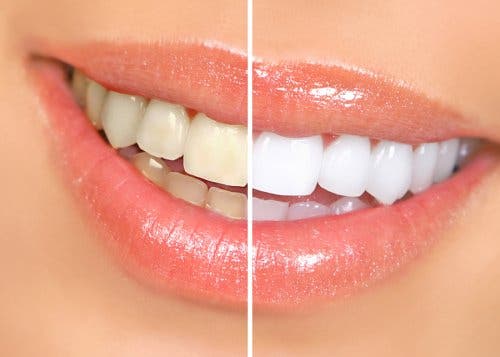
Most teeth whitening procedures involve applying a whitening gel of hydrogen peroxide or carbamide peroxide directly to the teeth. This produces a chemical change in the enamel and also eliminates stains.
Every time a new bleaching method comes on the market, it’s most likely formulated with bicarbonate or activated carbon. Also, there are other substances that whiten mechanically, for example, by removing the outermost layer of the tooth. These methods are less reliable though. Also, they can lead to sensitivity if not properly supervised by a professional.
Teeth whitening, like other dental treatments, can have side effects, such as dental sensitivity or root resorption, when not used properly. Therefore, it’s very important to always do it under the supervision of a dentist.
You may be interested in: The Secret Reason Why Tibetan Monks Have White Teeth
What types of teeth whitening methods are there?
Teeth whitening gel
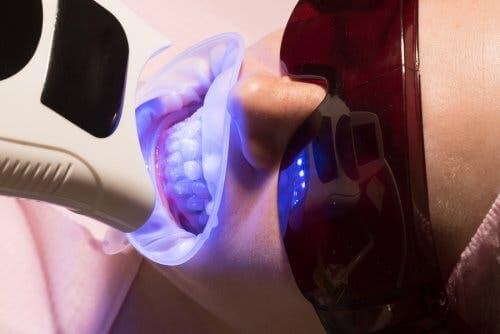
You can find this method in dental clinics and they can activate it with LED light, or not, as the case may be. Before starting the procedure, the dentist verifies they can do it without any risks.
They isolate the teeth and apply the gel (with or without light). The dentist is aware of the patient’s sensations at all times so as to avoid sensitivity throughout the process.
Outpatient teeth whitening followed by the dentist
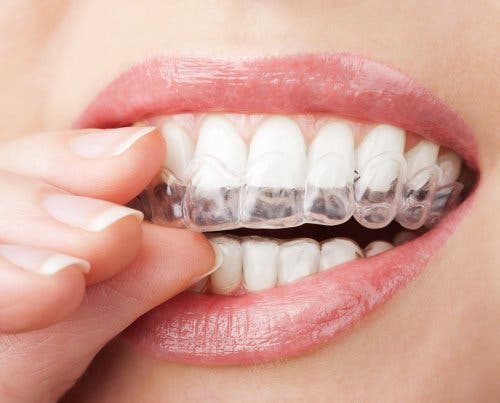
As the patient is not under supervision here, the professional prescribes a less potent whitening gel in order to avoid damage to the lips or gums. The dentist makes personalized splints for each patient and explains the procedure. It consists of applying a gel to the dental surface and placing the splint for a specific amount of time.
Teeth whitening with commercial products
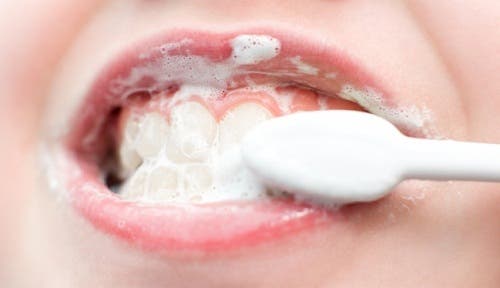
Many people think these products are a good option. However, professional supervision is essential when it comes to teeth whitening. The indiscriminate use of these products can lead to hypersensitivity and nerve and gum irritation. They can do more harm than good when not used properly.
You may be interested in: Natural Teeth Whitening Products
In short
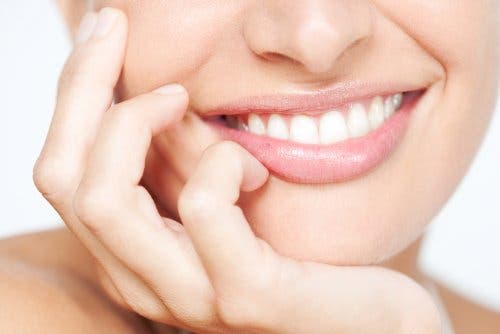
Teeth whitening can give you have a prettier smile, but you must keep in mind there are side effects. Therefore, you must do it under the supervision of a professional. They’ll choose the most suitable treatment for every person from among all the ones available.
Keep in mind that whitening with household products will never give you the same effect as what you’ll obtain at a dental clinic. You must keep in mind that our mouth and teeth are among our most prized body organs and we must take good care of our dental health.
All cited sources were thoroughly reviewed by our team to ensure their quality, reliability, currency, and validity. The bibliography of this article was considered reliable and of academic or scientific accuracy.
- González Sanz, Á. M., González Nieto, B. A., & González Nieto, E. (2013). Salud dental: relación entre la caries dental y el consumo de alimentos. Nutrición Hospitalaria (Vol. 28). Madrid: Scielo. Retrieved from http://scielo.isciii.es/scielo.php?script=sci_arttext&pid=S0212-16112013001000008
- Monteverde, C., Delgado, T., Martínez RIM, Guzmán, F., & Maura Espejel, M. (2002). Desmineralización-remineralización del esmalte dental. Revista de la Asociación Dental Mexicana (Vol. 59). Child’s World. Retrieved from http://www.medigraphic.com/cgi-bin/new/resumen.cgi?IDARTICULO=5509
This text is provided for informational purposes only and does not replace consultation with a professional. If in doubt, consult your specialist.








